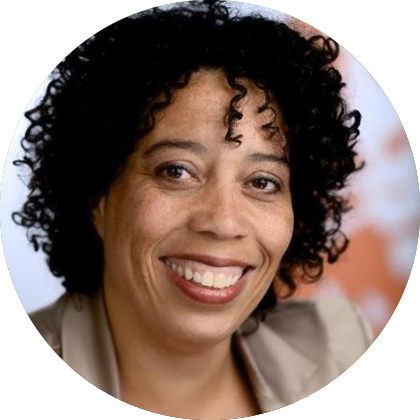5 tips to increase trust in your group
I received the following questions from one of our readers:
Can people ever work well together based on trust if there are people in the group who actually don't want to?
Can you give trust when part of the group does not want to / does not?
How can you ever work together based on equality and trusting in the best outcome when members of the group actually do not want to? I think this is very difficult. Is there any setting possible to work in a group based on trust if one or a few members of this group have a rather casual attitude?
You cannot enforce trust, but you do need it in a collaboration. It is a necessary ingredient. You must be able to trust others to take their responsibility, trust them to not abuse the freedom that arises, trust that equality is really equality.
What you can do is create an environment where trust has every chance to grow (and flourish). The following principles will help you to work safely with the CONSENT-method. Go through them as a checklist and see what else your team needs:
1 - Decide together whether you want to work together on the basis of CONSENT.
Actually this is the most important condition. If you want to try it out first, agree on a period in which you will use the CONSENT-method (unconditionally and by everyone) and agree on how and when you will evaluate and what you will do with the outcome of the evaluation.
2 - Really give everyone in the conversation their own space.
Make sure that 'dominant' people have the same voice as the other members and make sure that these people let the other person speak and do not interrupt (not even with a nice joke in between).
3 - Decide based on everyone’s consent and immediately attach an action point to them.
This can be an action, a result or a (small) follow-up step. When it is clear that something has to be done, it is easier to trust that a person or group of people will actually do this. In this way you also ensure that subjects do not 'simmer' and thus cause confusion and unrest. You make a decision together and then also reflect whether the decision has been properly implemented. It is also possible to decide with consent that there is no consent. Earlier I wrote a (Dutch) blog about it.
4 - Clarify the domain within which this group can make decisions.
And therefore also what cannot be decided because it falls outside the domain. Especially if you assume this is obvious, it makes extra sense to consider this. What seems obvious is the easiest to overlook. All too often I encounter situations where there is a lack of clarity around domains and this is precisely what undermines mutual trust.
5 - Put it on the agenda if you don't feel safe.
Take the first step, open up the conversation, make sure this too becomes transparent. This way trust can grow and cooperation can continue from a safe situation. This can be quite exciting, but you will see this will allow you and the group to grow.
Bonus Tip: Stick to our Conversation Etiquette!
On the right you can subscribe to our newsletter and receive our Conversation Etiquette as a PDF. You can print this handy cheat sheet and hand it out to all attendees during the meeting. These simple rules provide a lot of guidance and clarity and therefor they provide a safe basis for the conversation.
Working with the CONSENT-method is not difficult, but it does require some adjustment from those involved!
Let me know in the comments below if these tips where helpful! And tell me: what are important conditions for you to feel safe and to be able to give confidence?

I received the following questions from one of our readers:
Can people ever work well together based on trust if there are people in the group who actually don't want to?
Can you give trust when part of the group does not want to / does not?
How can you ever work together based on equality and trusting in the best outcome when members of the group actually do not want to? I think this is very difficult. Is there any setting possible to work in a group based on trust if one or a few members of this group have a rather casual attitude?
You cannot enforce trust, but you do need it in a collaboration. It is a necessary ingredient. You must be able to trust others to take their responsibility, trust them to not abuse the freedom that arises, trust that equality is really equality.
What you can do is create an environment where trust has every chance to grow (and flourish). The following principles will help you to work safely with the CONSENT-method. Go through them as a checklist and see what else your team needs:
1 - Decide together whether you want to work together on the basis of CONSENT.
Actually this is the most important condition. If you want to try it out first, agree on a period in which you will use the CONSENT-method (unconditionally and by everyone) and agree on how and when you will evaluate and what you will do with the outcome of the evaluation.
2 - Really give everyone in the conversation their own space.
Make sure that 'dominant' people have the same voice as the other members and make sure that these people let the other person speak and do not interrupt (not even with a nice joke in between).
3 - Decide based on everyone’s consent and immediately attach an action point to them.
This can be an action, a result or a (small) follow-up step. When it is clear that something has to be done, it is easier to trust that a person or group of people will actually do this. In this way you also ensure that subjects do not 'simmer' and thus cause confusion and unrest. You make a decision together and then also reflect whether the decision has been properly implemented. It is also possible to decide with consent that there is no consent. Earlier I wrote a (Dutch) blog about it.
4 - Clarify the domain within which this group can make decisions.
And therefore also what cannot be decided because it falls outside the domain. Especially if you assume this is obvious, it makes extra sense to consider this. What seems obvious is the easiest to overlook. All too often I encounter situations where there is a lack of clarity around domains and this is precisely what undermines mutual trust.
5 - Put it on the agenda if you don't feel safe.
Take the first step, open up the conversation, make sure this too becomes transparent. This way trust can grow and cooperation can continue from a safe situation. This can be quite exciting, but you will see this will allow you and the group to grow.
Bonus Tip: Stick to our Conversation Etiquette!
On the right you can subscribe to our newsletter and receive our Conversation Etiquette as a PDF. You can print this handy cheat sheet and hand it out to all attendees during the meeting. These simple rules provide a lot of guidance and clarity and therefor they provide a safe basis for the conversation.
Working with the CONSENT-method is not difficult, but it does require some adjustment from those involved!
Let me know in the comments below if these tips where helpful! And tell me: what are important conditions for you to feel safe and to be able to give confidence?
Dit artikel is geschreven door















